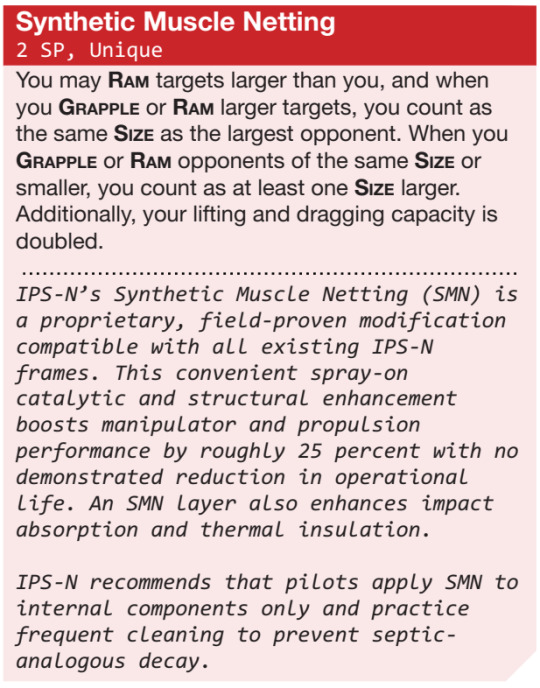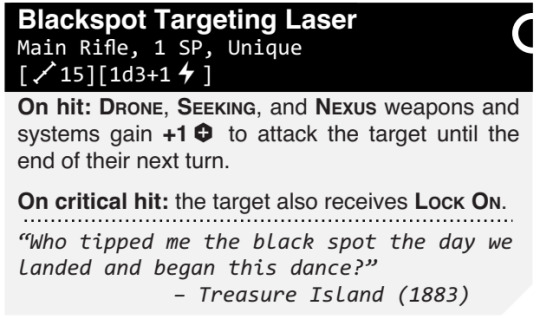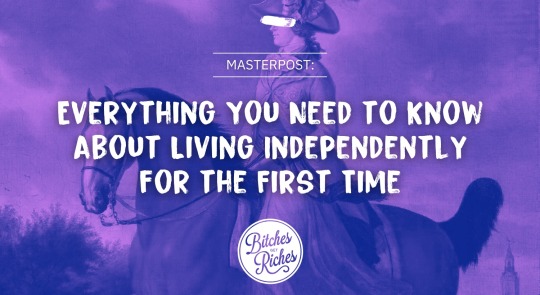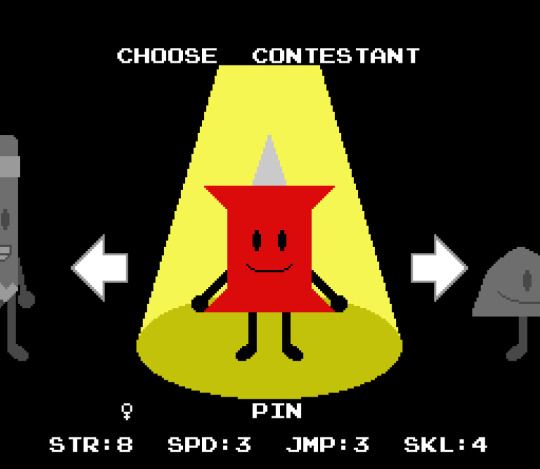#Internet Marketing Essentials
Text
would it be funnier to say that ida (glasses person) was born then the mothmanperson fucked off into the woods forever to pupate and become a mothmanperson or that she’s just Like That and its a big coincidence
#thinking thoughtilly#because she's Like That bc in the original story mothperson had sentience still and was just chillin in a cabin in the woods so that#they didnt get killed or government experimented etc#but in this rewrite its becoming very clear that the mothperson is just now essentially a beast of some kind#that only really does things to ensure its survival#squeezing in an arrogant archetype by having one of the protectors market off of taking shitty 1pixel#images of imago and selling them on the internet#she's always been buggirl to me#first would be like a bruce banner sitch where whoever imago was gave weird bug dna to their baby and then went beast mode a little after#their birth#keep saying they bc i havent decided on anything yet#nonbinary imago#untitled rewritten
2 notes
·
View notes
Text

#Digital marketing is the practice of promoting products#services#or brands using digital channels such as search engines#social media#email#mobile apps#and websites. With the proliferation of internet-enabled devices and the increasing use of digital media#digital marketing has become an best digital marketing agency Noida essential part of any organization's marketing strategy.
0 notes
Text
My plan to escape homelessness. I need your help to get started before winter!
hello friends! i'm a homeless queer guy living in a tiny car. it's been like this for most of my adult life, and i'm trying to make a change! I want to convert a van into my new home! my plan involves these stages:
Stage 1: acquire a van.
while still living off donations in my car, i'm fundraising. as soon as i can afford one, i'll purchase a van. the market shows most used vans that would be suitable are around $3.5-4.5k give or take. we're already about halfway there!
I'm really hoping this stage can be complete before november, as my car is not suited to survive another winter and it could be devastating to attempt it.
Stage 2: survive winter
since winter is approaching, i'll need to quickly put insulated walls in the van and make sure i can live in it. at this point, it'll already be an upgrade to my car, but i won't be able to do much building in cold weather, so it'll just be the bare minimum i need to survive the winter.
during this time, i'll be taking measurements, drawing plans, researching appliances, and generally preparing for the build process. i'll continue fundraising to make sure i can afford all the materials and tools i'll need. i may also take care of any maintenence the van might need. i'll also clean and sell my car so i have some cash from that as well.
Stage 3: build my home!
when it gets warm enough, i'll start doing the actual build. i'll document this on video as much as i can, and post the process on my youtube channel for not only the people who helped me, but for anyone who's curious. i'll start with solar panels and an electricity system, i'll add countertops and kitchen appliances, a shower and sink with plumbing and warm water, a toilet, a real bed, lights, climate control. it'll be essentially a house on wheels, and just the right size for me!
Stage 4: whatever comes next
once i have my new home, i'll need an income. i may take a regular job to support myself at first, and that will actually be possible when i have a shower. but, i've been considering making content pretty much my whole life, and now i think i have a great chance to actually pursue that. i'll use some of the money from selling my car in stage 2 to get some basic equipment (laptop, mic, camera). i'll be posting my van build at first, and after that i'll probably start by telling stories about my time being homeless, but i'm also interested in streaming and video essays. thanks to all the generous support i've been getting from my followers and other people on the internet, i feel my opportunities are wide open!
Please consider donating to my fundraiser to help me change my life!
GFM
2115/10k
2K notes
·
View notes
Text
9625939824 digi_ads_

#Reach your target audience with the power of digital#Digital marketing connects you with potential customers online#engaging with them#and eventually turning them into paying customers.#Digital Marketing is now an essential element of any modern business strategy due to the growth of the internet and the increasing populari#advises Digital Marketers.#DM us or contactus @digi_ads_ at 📞+91-9625939860 for consultation and more info#👉 Follow me on @digi_ads_#📩 Contact me for any digital marketing needs.#.#gda#gdaonline#digitalmarketingagencyonline#digitalmarkeing#digitalmarketingservices#socialmediamarketing#socialmediamarketingagency#socialmedia#socialmediatips#marketingstrategy#digitalmarketingstrategy#GoogleAdsTips#AdWordsTips#PPCMarketing#OnlineAds#AdWordsManagement#PPCAdvertising#AdWordsExpert#AdWordsPerformance#PPCSuccess
0 notes
Text
Printed Circuit Boards (PCBs) Market Analysis, Key Players, Share Dynamic Demand and Consumption to 2032

The printed circuit boards (PCBs) market refers to the industry involved in the design, production, and sale of PCBs, which are essential components in electronic devices. PCBs provide a platform for interconnecting and supporting various electronic components, such as integrated circuits (ICs), resistors, capacitors, and connectors.
printed circuit board market size is expected to increase USD 3.60 billion by 2032 and Growth Rate from 2023 CAGR of 3.9% Forecast Period 2023 To 2032
Here are some key points about the PCBs market:
Market Size and Growth: The PCBs market has experienced significant growth in recent years. Factors driving this growth include the increasing demand for consumer electronics, telecommunications equipment, automotive electronics, industrial automation, and healthcare devices. The proliferation of smart devices, Internet of Things (IoT) applications, and advancements in technologies like 5G and artificial intelligence also contribute to the expanding PCBs market.
Types of PCBs: PCBs come in different types, including single-sided, double-sided, multi-layered, rigid, flexible, and rigid-flex PCBs. Each type has its specific applications and advantages. For instance, flexible PCBs are used in wearable devices and applications where flexibility and compactness are essential, while multi-layered PCBs are commonly found in complex electronic systems like smartphones and computers.
Manufacturing Process: PCB manufacturing involves several steps, including design, substrate selection, copper etching, solder mask application, and component assembly. The industry has seen advancements in manufacturing techniques such as surface-mount technology (SMT) and advanced packaging, enabling smaller and more complex PCB designs.
Market Players: The PCBs market is highly competitive, with numerous manufacturers operating globally. Some of the key players in the industry include Nippon Mektron Ltd., Unimicron Technology Corp., Zhen Ding Technology Holding Limited, Tripod Technology Corporation, Samsung Electro-Mechanics Co., Ltd., and TTM Technologies, Inc. These companies offer a wide range of PCB products and services to cater to different industries and customer requirements.
Regional Market: Asia-Pacific dominates the global PCBs market, primarily due to the presence of major electronics manufacturing hubs in countries like China, Japan, South Korea, and Taiwan. These countries are known for their strong electronics industry, which drives the demand for PCBs. North America and Europe also contribute significantly to the market due to their established electronics and automotive sectors.
Emerging Trends: The PCBs market is influenced by several emerging trends. These include the miniaturization of electronic devices, the adoption of advanced materials and technologies for higher performance and reliability, the shift towards environmentally friendly and lead-free PCBs, and the growing demand for high-speed and high-frequency PCBs to support advanced applications.
It's worth noting that the PCBs market is subject to various factors, including technological advancements, regulatory requirements, supply chain dynamics, and customer demand. To obtain the most accurate and up-to-date information on the market, it's advisable to refer to industry reports, market research studies, and publications specific to the PCBs market.
I recommend referring to our Stringent datalytics firm, industry publications, and websites that specialize in providing market reports. These sources often offer comprehensive analysis, market trends, growth forecasts, competitive landscape, and other valuable insights into the humidity sensors market.
By visiting our website or contacting us directly, you can explore the availability of specific reports related to the humidity sensors market. These reports often require a purchase or subscription, but we provide comprehensive and in-depth information that can be valuable for businesses, investors, and individuals interested in the market.
Remember to look for recent reports to ensure you have the most current and relevant information.
Click Here, To Get Free Sample Report : https://stringentdatalytics.com/reports/printed-circuit-boards-(pcbs)-market/901/
Market Segmentations:
Global Printed Circuit Boards (PCBs) Market: By Company
• AT&S
• Nippon Mektron
• Unimicron
• Samsung
• Dynamic Electronics
• Daeduck Electronics
• CMK Corporation
• Nan Ya PCB Co.
• TTM Technologies
• Shenzhen Kinwong Electronic
Global Printed Circuit Boards (PCBs) Market: By Type
• Single-sided
• Double-sided
• Multi-layer
Global Printed Circuit Boards (PCBs) Market: By Application
• Consumer Electronics
• Aerospace and Defense
• Automotive
• Healthcare
• Others
Global Printed Circuit Boards (PCBs) Market: Regional Analysis
All the regional segmentation has been studied based on recent and future trends, and the market is forecasted throughout the prediction period. The countries covered in the regional analysis of the Global Printed Circuit Boards (PCBs) market report are U.S., Canada, and Mexico in North America, Germany, France, U.K., Russia, Italy, Spain, Turkey, Netherlands, Switzerland, Belgium, and Rest of Europe in Europe, Singapore, Malaysia, Australia, Thailand, Indonesia, Philippines, China, Japan, India, South Korea, Rest of Asia-Pacific (APAC) in the Asia-Pacific (APAC), Saudi Arabia, U.A.E, South Africa, Egypt, Israel, Rest of Middle East and Africa (MEA) as a part of Middle East and Africa (MEA), and Argentina, Brazil, and Rest of South America as part of South America.
Visit Report Page for More Details: https://stringentdatalytics.com/reports/printed-circuit-boards-(pcbs)-market/901/
Reasons to Purchase Printed Circuit Boards (PCBs) Market Report:
• To obtain insights into industry trends and dynamics, including market size, growth rates, and important factors and difficulties. This study offers insightful information on these topics.
• To identify important participants and rivals: This research studies can assist companies in identifying key participants and rivals in their sector, along with their market share, business plans, and strengths and weaknesses.
• To comprehend consumer behaviour: these research studies can offer insightful information about customer behaviour, including preferences, spending patterns, and demographics.
• To assess market opportunities: These research studies can aid companies in assessing market chances, such as prospective new goods or services, fresh markets, and new trends.
• To make well-informed business decisions: These research reports give companies data-driven insights that they may use to plan their strategy, develop new products, and devise marketing and advertising plans.
In general, market research studies offer companies and organization’s useful data that can aid in making decisions and maintaining competitiveness in their industry. They can offer a strong basis for decision-making, strategy development, and business planning.
Click Here, To Buy Premium Report: https://stringentdatalytics.com/purchase/printed-circuit-boards-(pcbs)-market/901/?license=single
About US:
Stringent Datalytics offers both custom and syndicated market research reports. Custom market research reports are tailored to a specific client's needs and requirements. These reports provide unique insights into a particular industry or market segment and can help businesses make informed decisions about their strategies and operations.
Syndicated market research reports, on the other hand, are pre-existing reports that are available for purchase by multiple clients. These reports are often produced on a regular basis, such as annually or quarterly, and cover a broad range of industries and market segments. Syndicated reports provide clients with insights into industry trends, market sizes, and competitive landscapes. By offering both custom and syndicated reports, Stringent Datalytics can provide clients with a range of market research solutions that can be customized to their specific needs
Contact US:
Stringent Datalytics
Contact No - 91-9763384149
Email Id - [email protected]
Web - https://stringentdatalytics.com/
#Printed Circuit Boards (PCBs) Market Analysis#Key Players#Share Dynamic Demand and Consumption to 2032#The printed circuit boards (PCBs) market refers to the industry involved in the design#production#and sale of PCBs#which are essential components in electronic devices. PCBs provide a platform for interconnecting and supporting various electronic compone#such as integrated circuits (ICs)#resistors#capacitors#and connectors.#printed circuit board market size is expected to increase USD 3.60 billion by 2032 and Growth Rate from 2023 CAGR of 3.9% Forecast Period#Here are some key points about the PCBs market:#1.#Market Size and Growth: The PCBs market has experienced significant growth in recent years. Factors driving this growth include the increas#telecommunications equipment#automotive electronics#industrial automation#and healthcare devices. The proliferation of smart devices#Internet of Things (IoT) applications#and advancements in technologies like 5G and artificial intelligence also contribute to the expanding PCBs market.#2.#Types of PCBs: PCBs come in different types#including single-sided#double-sided#multi-layered#rigid#flexible#and rigid-flex PCBs. Each type has its specific applications and advantages. For instance#flexible PCBs are used in wearable devices and applications where flexibility and compactness are essential
0 notes
Note
If I could ask you for some advice, what do you think helps the flavour text of a mech or piece of equipment sell a player on the fantasy of using it?
I'm finding it frustratingly difficult to do so with my own homebrew content: I can come up with lore and backstory easily enough, but re-reading it feels dry, and I can't help but contrast it with how the descrptions in official content and other supplements is more evocative, at least for mechs.
Let's observe some corebook Lancer flavour text and examine the various varieties it comes in.
Purely Functional

While it's usually not the most fun type of flavour text, this just tells us what the weapon is, and - if it has any particular tags or on-hit effects - why it's like that. The Hand Cannon is a good example: here's what it is (modified pistol), here's why it does more damage, and here's why it has Loading.
The main advantage of Purely Functional flavour text is that it provides space for other types of flavour text to breathe. Flavour text is a great place for jokes, but it's not good for every piece of flavour text to be a joke - the pauses between notes in music are just as important as the notes.
Obfuscating Vendorspeak

The Bristlecrown Flechette Launcher this is a great example of dark humour that Lancer uses quite often: marketing fast-talk to cover up something really unpleasant. The joke here is based on us understanding precisely what the equipment does mechanically, and then seeing how the manufacturer tries to sell it. There's a bunch of dense technobabble here meant to obfuscate the fact that this weapon fires knives in every direction specifically designed to kill infantry.

Deadpan Weirdness

The joke here relies on describing something extremely weird like it's the most natural thing in the world. Wait, you're telling me that in a world where I can just print new parts if the old ones break, they put DRM on my fucking knife and I have to apologise to the fucking knife maker to get a new one? What the fuck, dude? Why are you acting like this makes any sense?!

My sword uploads fucking what to the Space Internet?!
Third-Act Twist

This type of flavour text disguises itself as something else - most often Purely Functional - and then hits you with Third Act Twist. It makes you go "wait, what?!" It's very classic setup-punchline stuff. You're telling me my mech can rot?!
As a side note, Lancer loves to use this for its NHPs.

WHY DID YOU PUT THAT IN SCARE QUOTES, LUCIFER
Worldbuilding

This is similar to the Purely Functional, but instead of just describing technical specifications of the weapons, it puts the weapon in the broader context of the setting's history. Okay, so we know what this weapon is and what it does - why was it built? What was the original use case, and why? Most importantly, what can the existence of this weapon tell us about the world that build it?

Whimsical Aside

This is the insertion of a light-hearted, humanising little insertion regarding how this piece of equipment gets used in the field. This serves to remind us that soldiers aren't cold, unfeeling killing machines: they can be as emotional, irreverent and silly as the rest of us, and they do things like name their mobile bombs...

... or call resupply drones "mech snacks."
The Ominous Out-Of-Context Quote That Explains Nothing And Only Raises More Questions

As I've said in multiple textmash memes, this is basically Tom and Miguel's shorthand for "this technology is Intensely Fucked Up in a way that it is more fun and scary not to explain." This is essentially Lancer's version of SCP's [REDACTED].
You might think this is the domain of HORUS, and you'd be right, but every single manufacturer indulges in these - although IPS-N had to wait until NRFaW to get theirs:

What the fuck do you mean by that, Lancer?
437 notes
·
View notes
Text
Person who is definitely totally not racist voice: I can't fucking BELIEVE there are people who are UNIRONICALLY fans of of East Asian games with microtransactions, and the characters therein! How stupid can they be? It's completely different from being a fan of my western video games, which also have microtransactions but different ones. Don't they realize that they're essentially doing free marketing for these game studios? It's not as if western internet fandom culture and the convention circuit has been cultivated to act as marketing outlets for the western culture industries! I can't believe someone would like stories and characters Made by a Game Studio to Make Money, as opposed to my beloved western movies and tv shows, which the creators all made entirely out of the goodness of their hearts. This could only be the result of a Gambling Addiction Most Foul!
515 notes
·
View notes
Text
Edit: the app launched and Is down- I have the initial apology video in a post here and I’m working on getting a full archive of their TikTok up ASAP. I’m letting the rest of this post remain since I do still stand by most of it and also don’t like altering things already in circulation.
Warning for criticism and what I’d consider some harsh to outright mean words:
So I’ve just been made aware of the project known of as ‘lore.fm’ and I’m not a fan for multiple reasons. For one this ‘accessibility’ tool complicates the process of essentially just using a screen reader (something native to all I phones specifically because this is a proposed IOS app) in utterly needless and inaccessible ways. From what I have been seeing on Reddit they have been shielding themselves (or fans of the project have been defending them) with this claim of being an accessibility tool as well to which is infuriating for so many reasons.
I plan to make a longer post explaining why this is a terrible idea later but I’ll keep it short for tonight with my main three criticisms and a few extras:
1. Your service requires people to copy a url for a fic then open your app then paste it into your app and click a button then wait for your audio to be prepared to use. This is needlessly complicating a process that exists on IOS already and can be done IN BROWSER using an overlay that you can fully control the placement of.
2. This is potentially killing your own fandom if it catches on with the proposed target market of xreader smut enjoyers because of only needing the link as mentioned above. You don’t have to open a fic to get a link this the author may potentially not even get any hits much less any other feedback. At least when you download a pdf you leave a hit: the download button is on the page with the fic for a reason. Fandom is a self sustaining eco system and many authors get discouraged and post less/even stop writing all together if they get low interaction.
3. Maybe we shouldn’t put something marketed as turning smut fanfic into audio books on the IOS App Store right now. Maybe with KOSA that’s a bad idea? Just maybe? Sarcasm aside we could see fan fiction be under even more legal threat if minors use this to listen to the content we know they all consume via sites like ao3 (even if we ask them not to) and are caught with it. Auditory content has historically been considered much more obscene/inappropriate than written content: this is a recipe for a disaster and more internet regulations we are trying to avoid.
I also have many issues with the fact that this is obviously redistributing fanfiction (thus violating the copyright we hold over our words and our plots) and removing control the author should have over their content and digital footprint. Then there is the fact that even though the creator on TikTok SAYS you can email to have your fic ‘excluded’ based on the way the demo works (pasting a link) I’m gonna assume that’s just to cover her ass/is utter bullshit. I know that’s harsh but if it walks like a duck and quacks like a duck it’s probably a duck.
I am all for women in stem- I’ve BEEN a woman in Stem- but this is not a cool girl boss moment. This is someone naive enough to think this will go over well at best or many other things (security risks especially) at worst.
In conclusion for tonight: I hope this person is a troll but there is enough hype and enough paid for web domains that I don’t think that’s the case. There are a litany of reasons every fanfic reader and writer should be against something like this existing and I’ll outline them all in several other posts later.
Do not email their opt out email address there is no saying what is actually happening with that data and it is simply not worth the risks it could bring up. I hate treating seemingly well meaning people like potential cyber criminals but I’ve seen enough shit by now that it’s better to be safe than sorry. You’re much safer just locking all your fics to account only. I haven’t yet but I may in the future if that is the only option.
If anyone wants a screen reader tutorial and a walk through of my free favorites as well as the native IOS screen reader I can post that later as well. Sorry for the heavy content I know it’s not my normal fare.
#it’s especially insulting the way this is marketed as solving a problem when the solution already exists#ableism#lore.fm#terrible app ideas that shouldn’t happen#serious#accessibility#screen readers#lore.fm should not launch#accessibility tools that are inherently ableist in design#I wish I was making this up
600 notes
·
View notes
Text
Utah’s getting some of America’s best broadband

TOMORROW (May 17), I'm at the INTERNET ARCHIVE in SAN FRANCISCO to keynote the 10th anniversary of the AUTHORS ALLIANCE.

Residents of 21 cities in Utah have access to some of the fastest, most competitively priced broadband in the country, at speeds up to 10gb/s and prices as low as $75/month. It's uncapped, and the connections are symmetrical: perfect for uploading and downloading. And it's all thanks to the government.
This broadband service is, of course, delivered via fiber optic cable. Of course it is. Fiber is vastly superior to all other forms of broadband delivery, including satellites, but also cable and DSL. Fiber caps out at 100tb/s, while cable caps out at 50gb/s – that is, fiber is 1,000 times faster:
https://www.eff.org/deeplinks/2019/10/why-fiber-vastly-superior-cable-and-5g
Despite the obvious superiority of fiber, America has been very slow to adopt it. Our monopolistic carriers act as though pulling fiber to our homes is an impossible challenge. All those wires that currently go to your house, from power-lines to copper phone-lines, are relics of a mysterious, fallen civilization and its long-lost arts. Apparently we could no more get a new wire to your house than we could build the pyramids using only hand-tools.
In a sense, the people who say we can't pull wires anymore are right: these are relics of a lost civilization. Specifically, electrification and later, universal telephone service was accomplished through massive federal grants under the New Deal – grants that were typically made to either local governments or non-profit co-operatives who got everyone in town connected to these essential modern utilities.
Today – thanks to decades of neoliberalism and its dogmatic insistence that governments can't do anything and shouldn't try, lest they break the fragile equilibrium of the market – we have lost much of the public capacity that our grandparents took for granted. But in the isolated pockets where this capacity lives on, amazing things happen.
Since 2015, residents of Jackson County, KY – one of the poorest counties in America – have enjoyed some of the country's fastest, cheapest, most reliable broadband. The desperately poor Appalachian county is home to a rural telephone co-op, which grew out of its rural electrification co-op, and it used a combination of federal grants and local capacity to bring fiber to every home in the county, traversing dangerous mountain passes with a mule named "Ole Bub" to reach the most remote homes. The result was an immediately economic uplift for the community, and in the longer term, the county had reliable and effective broadband during the covid lockdowns:
https://www.newyorker.com/tech/annals-of-technology/the-one-traffic-light-town-with-some-of-the-fastest-internet-in-the-us
Contrast this with places where the private sector has the only say over who gets broadband, at what speed, and at what price. America is full of broadband deserts – deserts that strand our poorest people. Even in the hearts of our largest densest cities, whole neighborhoods can't get any broadband. You won't be surprised to learn that these are the neighborhoods that were historically redlined, and that the people who live in them are Black and brown, and also live with some of the highest levels of pollution and its attendant sicknesses:
https://pluralistic.net/2021/06/10/flicc/#digital-divide
These places are not set up for success under the best of circumstances, and during the lockdowns, they suffered terribly. You think your kid found it hard to go to Zoom school? Imagine what life was like for kids who attended remote learning while sitting on the baking tarmac in a Taco Bell parking lot, using its free wifi:
https://www.wsws.org/en/articles/2020/09/02/elem-s02.html
ISPs loathe competition. They divide up the country into exclusive territories like the Pope dividing up the "new world" and do not trouble one another by trying to sell to customers outside of "their" turf. When Frontier – one of the worst of America's terrible ISPs – went bankrupt, we got to see their books, and we learned two important facts:
The company booked one million customers who had no alternative as an asset, because they would pay more for slower broadband, and Frontier could save a fortune by skipping maintenance, and charging these customers for broadband even through multi-day outages; and
Frontier knew that it could make a billion dollars in profit over a decade by investing in fiber build-out, but it chose not to, because stock analysts will downrank any carrier that made capital investments that took more than five years to mature. Because Frontier's execs were paid primarily in stock, they chose to strand their customers with aging copper connections and to leave a billion dollars sitting on the table, so that their personal net worth didn't suffer a temporary downturn:
https://www.eff.org/deeplinks/2020/04/frontiers-bankruptcy-reveals-cynical-choice-deny-profitable-fiber-millions
ISPs maintain the weirdest position: that a) only the private sector can deliver broadband effectively, but b) to do so, they'll need massive, unsupervised, no-strings-attached government handouts. For years, America went along with this improbable scheme, which is why Trump's FCC chairman Ajit Pai gave the carriers $45 billion in public funds to string slow, 19th-century-style copper lines across rural America:
https://pluralistic.net/2022/02/27/all-broadband-politics-are-local/
Now, this is obviously untrue, and people keep figuring out that publicly provisioned broadband is the only way for America to get the same standard of broadband connectivity that our cousins in other high-income nations enjoy. In order to thwart the public's will, the cable and telco lobbyists joined ALEC, the far-right, corporatist lobbying shop, and drafted "model legislation" banning cities and counties from providing broadband, even in places the carriers chose not to serve:
https://pluralistic.net/2023/03/19/culture-war-bullshit-stole-your-broadband/
Red states across America adopted these rules, and legislators sold this to their base by saying that this was just "keeping the government out of their internet" (even as every carrier relied on an exclusive, government-granted territorial charter, often with massive government subsidies).
ALEC didn't target red states exclusively because they had pliable, bribable conservative lawmakers. Red states trend rural, and rural places are the most likely sites for public fiber. Partly, that's because low-density areas are harder to make a business case for, but also because these are also the places that got electricity and telephone through New Deal co-ops, which are often still in place.
Just about the only places in America where people like their internet service are the 450+ small towns where the local government provides fiber. These places vote solidly Republican, and it was their beloved conservative lawmakers whom ALEC targeted to enact laws banning their equally beloved fiber – keep voting for Christmas, turkeys, and see where it gets you:
https://communitynets.org/content/community-network-map
But spare a little sympathy for the conservative movement here. The fact that reality has a pronounced leftist bias must be really frustrating for the ideological project of insisting that anything the market can't provide is literally impossible.
Which brings me back to Utah, a red state with a Republican governor and legislature, and a national leader in passing unconstitutional, unhinged, unworkable legislation as part of an elaborate culture war kabuki:
https://www.npr.org/2023/03/24/1165975112/utah-passes-an-age-verification-law-for-anyone-using-social-media
For more than two decades, a coalition of 21 cities in Utah have been building out municipal fiber. The consortium calls itself UTOPIA: "Utah Telecommunication Open Infrastructure Agency":
https://www.utopiafiber.com/faqs/
UTOPIA pursues a hybrid model: they run "open access" fiber and then let anyone offer service over it. This can deliver the best of both worlds: publicly provisioned, blazing-fast fiber to your home, but with service provided by your choice of competing carriers. That means that if Moms for Liberty captures you local government, you're not captive to their ideas about what sites your ISP should block.
As Karl Bode writes for Techdirt, Utahns in UTOPIA regions have their choice of 18 carriers, and competition has driven down prices and increased speeds. Want uncapped 1gb fiber? That's $75/month. Want 10gb fiber? That's $150:
https://www.techdirt.com/2024/05/15/utah-locals-are-getting-cheap-10-gbps-fiber-thanks-to-local-governments/
UTOPIA's path to glory wasn't an easy one. The dismal telco monopolists Qwest and Lumen sued to put them out of business, delaying the rollout by years:
https://www.deseret.com/2005/7/22/19903471/utopia-responds-to-qwest-lawsuit/
UTOPIA has been profitable and self-sustaining for over 15 years and shows no sign of slowing. But 17 states still ban any attempt at this.
Keeping up such an obviously bad policy requires a steady stream of distractions and lies. The "government broadband doesn't work" lie has worn thin, so we've gotten a string of new lies about wireless service, insisting that fiber is obviated by point-to-point microwave relays, or 5g, or satellite service.
There's plenty of places where these services make sense. You're not going to be able to use fiber in a moving car, so yeah, you're going to want 5g (and those 5g towers are going to need to be connected to each other with fiber). Microwave relay service can fill the gap until fiber can be brought in, and it's great for temporary sites (especially in places where it doesn't rain, because rain, clouds, leaves and other obstructions are deadly for microwave relays). Satellite can make sense for an RV or a boat or remote scientific station.
But wireless services are orders of magnitude slower than fiber. With satellite service, you share your bandwidth with an entire region or even a state. If there's only a couple of users in your satellite's footprint, you might get great service, but when your carrier adds a thousand more customers, your connection is sliced into a thousand pieces.
That's also true for everyone sharing your fiber trunk, but the difference is that your fiber trunk supports speeds that are tens of thousands of times faster than the maximum speeds we can put through freespace electromagnetic spectrum. If we need more fiber capacity, we can just fish a new strand of fiber through the conduit. And while you can increase the capacity of wireless by increasing your power and bandwidth, at a certain point you start pump so much EM into the air that birds start falling out of the sky.
Every wireless device in a region shares the same electromagnetic spectrum, and we are only issued one such spectrum per universe. Each strand of fiber, by contrast, has its own little pocket universe, containing a subset of that spectrum.
Despite all its disadvantages, satellite broadband has one distinct advantage, at least from an investor's perspective: it can be monopolized. Just as we only have one electromagnetic spectrum, we also only have one sky, and the satellite density needed to sustain a colorably fast broadband speed pushes the limit of that shared sky:
https://spacenews.com/starlink-vs-the-astronomers/
Private investors love monopoly telecoms providers, because, like pre-bankruptcy Frontier, they are too big to care. Back in 2021, Altice – the fourth-largest cable operator in America – announced that it was slashing its broadband speeds, to be "in line with other ISPs":
https://pluralistic.net/2021/06/27/immortan-altice/#broadband-is-a-human-right
In other words: "We've figured out that our competitors are so much worse than we are that we are deliberately degrading our service because we know you will still pay us the same for less."
This is why corporate shills and pro-monopolists prefer satellite to municipal fiber. Sure, it's orders of magnitude slower than fiber. Sure, it costs subscribers far more. Sure, it's less reliable. But boy oh boy is it profitable.
The thing is, reality has a pronounced leftist bias. No amount of market magic will conjure up new electromagnetic spectra that will allow satellite to attain parity with fiber. Physics hates Starlink.
Yeah, I'm talking about Starlink. Of course I am. Elon Musk basically claims that his business genius can triumph over physics itself.
That's not the only vast, impersonal, implacable force that Musk claims he can best with his incredible reality-distortion field. Musk also claims that he can somehow add so many cars to the road that he will end traffic – in other words, he will best geometry too:
https://pluralistic.net/2022/10/09/herbies-revenge/#100-billion-here-100-billion-there-pretty-soon-youre-talking-real-money
Geometry hates Tesla, and physics hates Starlink. Reality has a leftist bias. The future is fiber, and public transit. These are both vastly preferable, more efficient, safer, more reliable and more plausible than satellite and private vehicles. Their only disadvantage is that they fail to give an easily gulled, thin-skinned compulsive liar more power over billions of people. That's a disadvantage I can live with.

If you'd like an essay-formatted version of this post to read or share, here's a link to it on pluralistic.net, my surveillance-free, ad-free, tracker-free blog:
https://pluralistic.net/2024/05/16/symmetrical-10gb-for-119/#utopia

Image:
4028mdk09 (modified)
https://commons.wikimedia.org/wiki/File:Rote_LED_Fiberglasleuchte.JPG
CC BY-SA 3.0
https://creativecommons.org/licenses/by-sa/3.0/deed.en
334 notes
·
View notes
Photo

On leaving home for the first time:
Leaving Home before 18: A Practical Guide for Cast-Offs, Runaways, and Everybody in Between
Ask the Bitches: “I Just Turned 18 and My Parents Are Kicking Me Out. How Do I Brace Myself?”
Ask the Bitches: I Want to Move Out, but I Can’t Afford It. How Bad Would It Be to Take out Student Loans to Cover It?
How To Start at Rock Bottom: Welfare Programs and the Social Safety Net
Advice I Wish My Parents Gave Me When I Was 16
Ask the Bitches: How Can I Make Myself Financially Secure Before Age 30?
You Won’t Regret Your Frugal 20s
Master the Logistics and Etiquette of Moving Out
Season 2, Episode 5: “What Do I Need to Know about Moving into My First Apartment?”
On basic finance:
How the Hell Does One Open a Bank Account? Asking for a Friend.
How Do You Write and Cash Checks? Asking for a Friend.
Budgets Don’t Work for Everyone—Try the Spending Tracker System Instead
You Must Be This Big to Be an Emergency Fund
A Hand-Holding Guide to Getting Your First Credit Card
How to File Your Taxes FOR FREE: Simple Instructions for the Stressed-Out Taxpayer
Dafuq Is Credit and How Do You Bend It to Your Will?
How to Save for Retirement When You Make Less Than $30,000 a Year
Dafuq Is Interest and How Does It Work for the Forces of Darkness?
What’s the Difference Between Savings and Checking Accounts, and How Should I Be Using Them?
Dafuq Is a Down Payment? And Why Do You Need One to Buy Stuff?
Dafuq Is Insurance and Why Do You Even Need It?
Investing Deathmatch: Investing in the Stock Market vs. Just… Not
Dafuq Is a Retirement Plan and Why Do You Need One?
Do NOT Make This Disastrous Beginner Mistake With Your Retirement Funds
On managing your household:
How the Hell Does One Laundry? Asking for a Friend.
How the Hell Does One Wash Dishes? Asking for a Friend.
Ask the Bitches: Why Are Painted Mason Jars the Internet’s Only Solution to My Tiny Apartment Woes?
9 Essential Tools for Apartment-Dwellers (and 6 That Are Kinda Useless)
Ask the Bitches: How Can I Survive in an Apartment with No Heat?
How to Save Money on Your Beloved Pets
Bullshit Reasons Not to Buy a House: Refuted
How To Maintain Your Car When You’re Barely Driving It
25 Tricks to Stay Cool WITHOUT Air Conditioning
On feeding and caring for yourself:
You Should Learn To Cook. Here’s Why.
How to Shop for Groceries like a Boss
If You Don’t Eat Leftovers I Don’t Even Want to Know You
I Think I Need to Go the Emergency Room?
Ask the Bitches: Ugh, How Do I Build the Habit of Taking Meds?
On maintaining relationships:
Season 1, Episode 8: “My Mother Demands Information About My One-Night Stands.”
Season 1, Episode 3: “My Parents Have Bad Credit. Should I Help by Co-signing Their Mortgage?”
Ask the Bitches: How Do I Say “No” When a Loved One Asks for Money… Again?
Ask the Bitches: My Dad Sucks with Money. How Do I Make Him Change?
You Need to Talk to Your Parents About Their Retirement Plan
Season 2, Episode 1: “I’m Financially Stable, but My Friends Aren’t. The Guilt Is Crushing!”
On starting your career:
22-Year-Olds Don’t Belong in Grad School
High School Students Have No Way of Knowing What Career to Choose. Why Do We Make Them Do It Anyway?
The Actually Helpful, Nuanced, Non-Bullshit Way to Choose a Future Career
Your College Major May Not Prepare You for Your Job—but It Can Prepare You for Life
The Ugly Truth About Unpaid Internships
Your School or Workplace Benefits Might Include Cool Free Stuff
5K notes
·
View notes
Text
We’ve just taken a major step toward cleaning up space junk.
On Monday, October 2, the Federal Communications Commission (FCC) in the US issued its first fine for space debris, ordering the US TV provider Dish to pay $150,000 for failing to move one of its satellites into a safe orbit.
“It is definitely a very big symbolic moment for debris mitigation,” says Michelle Hanlon, a space lawyer at the University of Mississippi. “It’s a great step in the right direction.”
But it might be more than just a symbolic gesture by the FCC. Not only does it set a precedent for tackling bad actors who leave dangerous junk orbiting Earth, but it could send shock waves through the industry as other satellite operators become wary of having their reputation tarnished. While the $150,000 FCC fine was modest, Dish’s share price fell by nearly 4% immediately following its announcement, pushing the company’s $3 billion valuation down about $100 million.
The FCC’s action could also help breathe new life into the still-small market for commercial removal of space debris, essentially setting a price—$150,000—for companies such as Astroscale in Japan and ClearSpace in Switzerland to aim for in providing services that use smaller spacecraft to sidle up to dead satellites or rockets and pull them back into the atmosphere...
Another hope is that the FCC’s fine will encourage other countries to follow suit with their own enforcement actions on space junk. “It sends a message out of America taking leadership in this area,” says Newman. “This is starting the ball rolling.”
Today there are more than 8,000 active satellites, nearly 2,000 dead satellites, and hundreds of empty rockets orbiting Earth. Managing these objects and preventing collisions is a huge task, and one that is becoming increasingly difficult as the number of satellites grows rapidly. The worsening situation is largely due to mega-constellations of hundreds or thousands of satellites from companies like SpaceX and Amazon, designed to beam the internet to any corner of the globe...
Hanlon says there are further measures that could be taken to discourage companies from failing to dispose of satellites properly. “Honestly, I would love to see that if you don’t meet your license requirements, you’re banned from launching for a number of years,” she says. “If you’re driving under the influence you can have your license revoked. These are the kinds of measures we need to see.”
Chris Johnson, a space law advisor at the Secure World Foundation in the US, says the loss of reputation for Dish about the satellite situation might be worse than any fine it could have received. “They promised to remove it and they didn’t,” he says. “It’s like the first operator of a car to get a speeding ticket.”
The fall in the company’s share price appears to be indicative of that reputational damage. The fine may not have been as severe as it could have been, but the FCC’s actions can be seen as a warning to other companies to tackle space junk. “This is going to be on their record and their reputation,” says Johnson. “It’s not trivial.”
-via MIT Technology Review, October 5, 2023
Always nice to see steps taken to tackle a problem BEFORE it causes incredibly massive issues
791 notes
·
View notes
Text

Has anyone ever heard of “Battle for Dream Island” (1990) before? Really obscure NES game, doesn’t even have a Wikipedia page (or hell, even a mention in one).
From what little I can find about it on the internet, Battle for Dream Island was an NES game released on January 1st, 1990, apparently made entirely by a pair of independent American developers. Never made all that many sales, but eventually it garnered a rather niche following on an obscure gaming forum, though it had long since dissipated. Unfortunately, seemingly nothing from the forum threads was archived, so all I have to go on are a few vague threads titles from a navigation page.
I, rather cliched like, bought this BfDI cartridge from a sleazy old guy at a flea market (along with Puzznic and Wario’s Woods for a bargain deal). I dumped the ROM and booted it up on an emulator to take some screencaps.
Upon pressing start, you are prompted to “Choose Contestant,” and have a choice between any of 20 playable characters (who are all everyday objects, for some reason). Each contestant has their own stats, and while you can feel the difference while playing, the overall impact of character choice is pretty negligible. (Also some of these guys don’t even have arms?? Weird design choice but okay.)


Two screencaps of the character select screen. I went with Pin for my first playthrough cause idk she seemed kinda cute. I’m almost sure the stats are “Strength,” “Speed,” “Jump,” and “Skill.”
(Continued under cut)
While touting itself as a game show, BfDI is essentially a glorified minigame collection. The gameplay loop is as follows: You and the 19 other contestants play a minigame (referred to as “challenges”) to earn points based on how well you do (though I’m fairly certain the computer contestants just get a random amount of points for each challenge). Most of the challenges are various platforming segments, though some others fall more into puzzle game territory.


Two of the challenges. The green “Win Tokens” can be collected for bonus points. LEFT: A horizontal platformer level. The grey wall in the middle of the screencap moves up and down. RIGHT: A challenge about climbing ladders while avoiding “acid spitballs.” The game pauses to scroll vertically a la Super Mario Bros. 2.
After each challenge, this speaker thing shows up (pretty sure he’s supposed to be like a game show host?) and tallies up everyone’s score. The contestant with the least score gets “eliminated” and removed from the game.


The results screen. Leafy did rather poor on the last challenge, so she’s out of the game.
The game continues like this until you lose (have the least amount of points) and get booted to the game over screen, or until you are the last one left, in which case you win Dream Island! (Though of course in reality you just get booted back to the title screen. No Dream Island for you.)

The victory screen, with the gates to Dream Island in sight. Feels more like the gates to hell given how Pin’s staring at me.
It’s a fairly easy game for NES standards (I won on my first try). Took me about 80 minutes on my first playthrough, though subsequent ones could take less than an hour as I knew what I was doing. The brevity and the fact it saves your high score gives BfDI a nice sense of replayability (though this is probably best done sporadically, as the challenges tend to get a bit samey after a couple of back-to-back playthroughs).
So yeah, just wanted to share this in case anybody else has heard of it. I’ll probably rip the sprites and upload them sometime later cause it doesn’t look like anybody’s done that yet.
#bfdi#bfdia#bfb#tpot#bfdi firey#bfdi pin#bfdi leafy#bfdi needle#bfdi teardrop#bfdi eraser#bfdi flower#bfdi pencil#bfdi rocky#bfdi announcer#BfDI1990#unreality#unfiction
260 notes
·
View notes
Text
House md really is the gayest of gay queerbait. Like I’m sorry but besides SPN and maybe Sherlock no one was doing it like them. And the thing is I don’t even think it was intentional??? House md was unbelievably popular but in a normal Game of Thrones, Grey’s Anatomy way. It’s the kinda show that everyone’s mom watched when it first came out on cable (mine included). Appealing to a young queer internet audience in 2007 wasn’t a marketing strategy they would ever attempt. It doesn’t make sense.
And yet.
The sheer amount of gay jokes and allegories is just overwhelming by the time you get to the last season. Amber is Wilson’s House proxy, House and Wilson move in together TWICE, the fake marriage proposal, the exploration of toxic masculinity, Wilson’s 3 failed marriages, fucking everything about the last few eps. Like what other tv show spent almost a decade creating the most co-dependent, self-sabotaging relationship between its two main male characters that is essentially the backbone of the entire show. They literally ride off into the sunset together. Idk what else you want from me.
#House md#hatecrimes md#house#wilson#hilson#Listen#ive probably made this exact post before#And I’ll make it again#Cuz that show is batshit crazy#And one of the best worst experiences of my life#i am a changed man#i can never go back to who i was those years ago#“I need you to tell me that you love me”#Every winter i return to my house era#Every summer too#I think its a curse or smthn idk
782 notes
·
View notes
Video
youtube
How Amazon Is Ripping You Off
Shopping on Amazon? Stop! Watch this first.
Amazon is the world’s biggest online retailer. This one single juggernaut of a company is responsible for nearly 40% of all online sales in America. In an FTC lawsuit, they’re accused of using their mammoth size, and consumers’ dependence on them, to artificially jack up prices as high as possible, while prohibiting sellers on Amazon from charging lower prices anywhere else.
They’re accused of using a secret algorithm, codenamed "Project Nessie," to charge customers an estimated extra $1 billion dollars,
If this isn’t an abuse of power that hurts consumers, what is? So much for all of those “prime” deals you thought you were getting.
Project Nessie isn’t the only trick Amazon has been accused of using to exert its hulking dominance over the online retail industry — leading to higher prices for you.
Much of the FTC’s antitrust lawsuit centers around the treatment of independent merchants who sell items on Amazon’s online superstore — accounting for 60 percent of Amazon's sales.
Amazon allegedly uses strongarm tactics that force these sellers to keep their prices higher than they need to be. Like barring them from selling products for significantly less at other stores — or else risk being hidden in Amazon’s search results or having their sales stopped entirely.
And Amazon is accused of engaging in pay-to-play schemes and charging merchants excessive fees that end up costing you even more.
Independent sellers are effectively forced to pay Amazon to advertise their products prominently in search results. If they don’t fork over cash, then their products get buried underneath products of companies who do. This hurts sellers but also harms shoppers who have to parse through less relevant products that may be more expensive or lower quality.
And to be eligible for the coveted “Prime” badge on their items — which is considered crucial for competing on the platform — independent sellers are pushed into paying Amazon for additional services like warehousing and shipping, even if they could get those services cheaper elsewhere. If sellers forgo trying to qualify for Prime, their goods apparently become harder for customers to find.
When all of these extra fees are added up, Amazon takes around a 50 percent cut of each sale made by a third party. It’s projected that Amazon will earn around $125 billion from collecting fees in the U.S. in 2023, most of which get passed on to you.
By charging all of these extra fees and stifling independent companies from selling their products for less elsewhere, Amazon is using its dominance to essentially set prices for all consumers across the internet.
And when you combine Amazon’s control of ecommerce with all of the other industries it has entered by gobbling up companies — such as Whole Foods, One Medical, and MGM — you’re left with a behemoth that simply has too much power.
This is all part of a much larger problem of growing corporate dominance in America. In over 75% of U.S. industries, fewer companies now control more of their markets than they did twenty years ago.
The lack of competition and consumer choice has resulted in all of us paying more for goods because corporations like Amazon can raise their prices with impunity. By one estimate, corporate concentration has cost the typical American household $5,000 a year more than they would have spent if markets were truly competitive.
This power isn’t just being used to siphon more money from you. A giant corporation has the power to bust unions, keep workers’ wages low, and funnel money into our political system.
It’s a vicious cycle, making giant corporations more and more powerful.
But under the Biden administration, the government is making a strong effort to revive antitrust law and use its power to reign in big corporations that have grown too powerful.
We must stop the monopolization of America. This FTC lawsuit against Amazon is a great start.
521 notes
·
View notes
Text

BlackCoffeeBulb: you'll get him sued for copyright infringement for a few useless internet points, congrats
mpkeith : It's free advertising...
"Where did the name Wind Runner come from?"
"Well, there are these amazing books..."
So far (to my knowledge) nobody has been sued for Bridge Four homemade stuff, fan art, 3D printed shard blades and so on.
I really don't think Brandon Sanderson is that kind of guy. Seems to me he's happy to share with all of us his work.
Brandon Sanderson: I have expressly permitted it, in fact. I had a lawyer draw up as liberal a fanart policy as I could make, and not scare away people like film companies. Basically, you can create whatever you want for your personal use, and can even sell some form of fanart so long as you're not using me or implied relationship with me in the marketing.
Do look at the official language in my FAQ, though, as opposed to taking my (flawed) memory on how it works. Either way, no, I'm not going to ever be bothered by individual fan creations, and instead encourage them. And something like this far is a huge mark of respect from the owner, toward me.
gsauce8: So essentially as long as you're not saying something along the lines of "Officially licensed" or anything close to that, you're good to go? That's freaking awesome.
Brandon Sanderson: It's a little more tricky than that--I let the lawyers hash it out. But basically, you can't use our artwork, our branding, and can't say it's official. But you CAN sell art prints of art you made of characters/scenes from the books, even if they include things like Kaladin's scars or a Bridge Four patch. You don't need a license, and you don't owe us anything.
It's a legal grey area that I want to make less grey. I like fanart, and want to encourage it--and in so doing, feel like an artist making something transformative like this should be able to profit from their art. Yes, my books inspired that art--but other books inspired me to write, as did films and artwork. This is how art is created.
Mostly, this applies to thinks like prints right now. (We haven't authorized T-shirts, for example, as that kind of thing gets really tricky with movie deals wanting merchandising rights.) Again, read the exact language on the FAQ, but we've tried to be as lenient here as we can be.
Also, I have no problem with fanfic, so long as it remains in the fan realm, rather than being sold. (But if you write something awesome, and readers like it, I'd encourage you to change the names/setting and rebrand it as your own so you could sell it.)
#the stormlight archive#cfsbf#root#cosmere#words of radiance#brandon sanderson#branderson#wob#kind of#cosmere merch
296 notes
·
View notes
Text
not a new thought but one of the wildest and worst things about the GoFundMe Economy is the way it equates language and story with material reality. as an Internet Communicator in the imperial core -- as a person with a relative surplus of resources to distribute, who is getting my information about who needs those resources through language rather than experience, rather than encountering those needs directly in my community -- i am subconsciously weighing/evaluating every plea for help from a desperate person not as a person, but as a story; my decision to send a donation one way rather than another is, unless i monitor this impulse consciously, going to be based on the way the person in need or their family or their friends can communicate their needs, often in a language that is imposed upon them rather than their own. the "Good Colonizer" mindset (which i think is how i would characterize the role i have to work to unlearn, though i'm uhh not wedded to the phrase) places a premium on "credibility," an inchoate quality created, to my mind, almost entirely by language, essentially random in the way it attaches to one "deserving" person and not another. photos and videos are of course also part of the "credibility," but i still think that's a kind of language.
maybe credibility is even a kind of perceived class. "does this family have the Inherent Nobility to convince me, the Benevolent Arbiter of $20, of their suffering?" i try to correct for this bizarre tendency on an individual level, but as with everything on an individual level, like, who gives a shit?
anyway, very cool society that forces people in need NOT ONLY to sell their and their children's agony BUT ALSO to compete against the agony of others. very cool to shake my head disapprovingly as i browse the blood stalls in the market for vampires. still, a good morning to donate some ESims for Gaza (it is much easier than you think if you haven't done it before, there's a guide right on the website).
163 notes
·
View notes